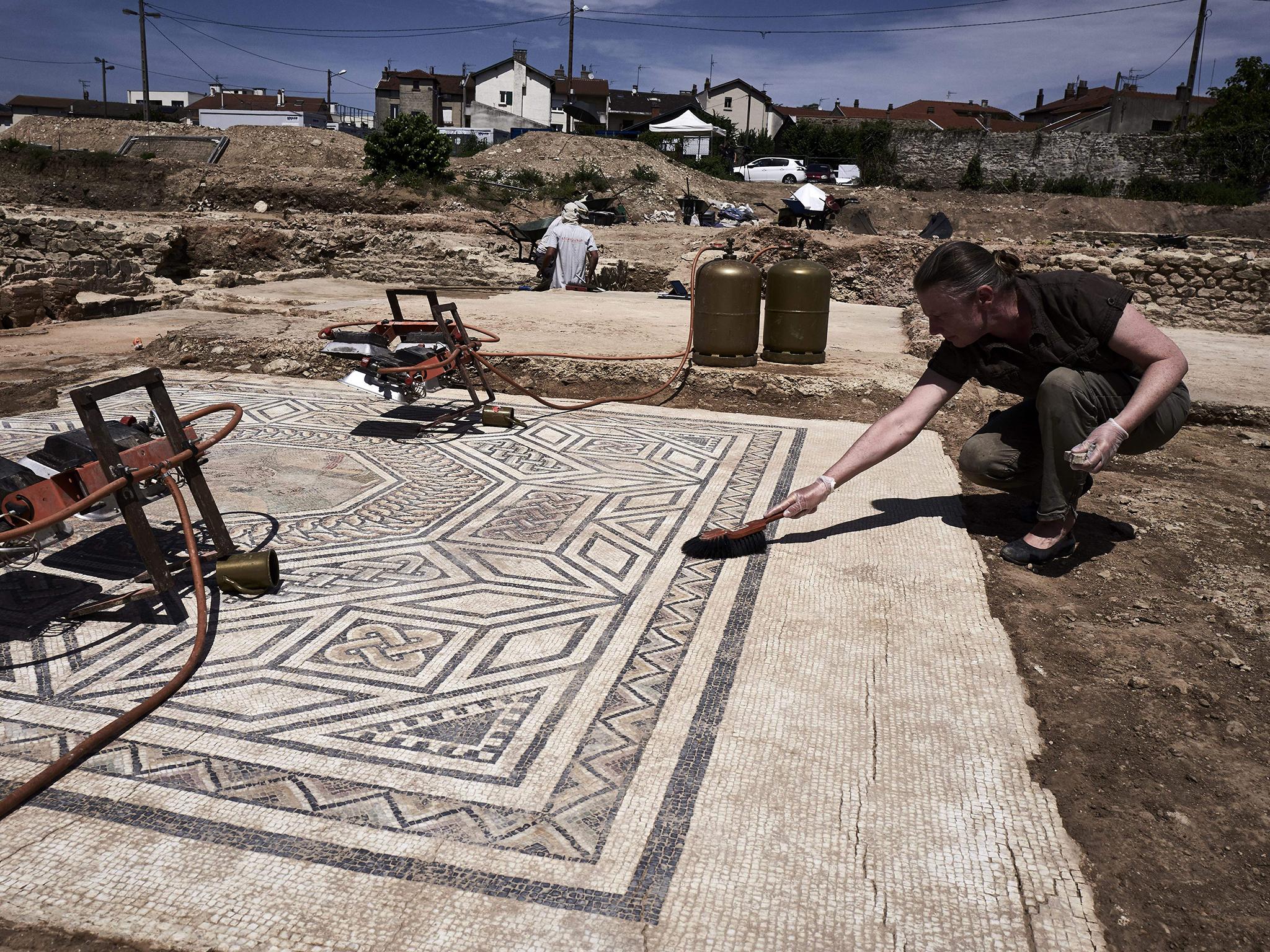'Little Pompeii'; Roman ruins discovered under site earmarked for French housing estate
'This is undoubtedly the most exceptional excavation of a Roman site in 40 or 50 years'

Your support helps us to tell the story
From reproductive rights to climate change to Big Tech, The Independent is on the ground when the story is developing. Whether it's investigating the financials of Elon Musk's pro-Trump PAC or producing our latest documentary, 'The A Word', which shines a light on the American women fighting for reproductive rights, we know how important it is to parse out the facts from the messaging.
At such a critical moment in US history, we need reporters on the ground. Your donation allows us to keep sending journalists to speak to both sides of the story.
The Independent is trusted by Americans across the entire political spectrum. And unlike many other quality news outlets, we choose not to lock Americans out of our reporting and analysis with paywalls. We believe quality journalism should be available to everyone, paid for by those who can afford it.
Your support makes all the difference.Ruins of an ancient Roman neighbourhood described as a "little Pompeii", have been discovered on a site intended for social housing in southern France.
Called an "exceptional discovery" by the French culture ministry, the 7,000sq m (75,000 sq ft) find in Vienne, a small town to the south of Lyon, includes luxury house and public buildings.
Objects thought to have been abandoned by residents fleeing fires in the first century AD have also been recovered.
Describing the find as a “real little Pompeii in Vienne”, Benjamin Clement, the archaeologist leading the dig said they were "unbelievably lucky" to discover it.
"This is undoubtedly the most exceptional excavation of a Roman site in 40 or 50 years,” he told AFP news agency.
One of the ruins has been dubbed a Bacchanalian House thanks to its floor tilings depicting maenads - female followers of Dionysus, the god of wine - and half-man half-goat satyrs.
The house may have belonged to a wealthy merchant before its first floor, roof and balcony caught in a fire.
A mosaic discovered in another house depicts a half naked Thalia, muse and patron of comedy, being kidnapped by Pan, god of satyrs.
Archaeologists have also identified a possible school of rhetoric or philosophy, which has a statue of Hercules in its fountain.
Situated on the banks of the Rhone river, the city of Vienne was on a route connecting northern Gaul with the southern province of Gallia Narbonensis.
It rose to prominence under Julius Caesar and was thought to have been inhabited for three centuries.
Excavation of the site started in April and archeologists have had their time to conclude the dig, extended to the end of the year by the French state.
A team of 20 archaeologists are at work digging down to older ruins.
Some finds will be restored for exhibition in Vienne’s museum of Gallo-Roman civilisation in 2019.
Join our commenting forum
Join thought-provoking conversations, follow other Independent readers and see their replies
Comments